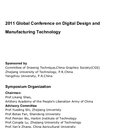Osthole prevents cerebral ischemia-reperfusion injury via the Notch signaling pathway.
Kata kunci
Abstrak
Stroke is a common cerebrovascular disease in aging populations, and constitutes the second highest principle cause of mortality and the principle cause of permanent disability, and ischemic stroke is the primary form. Osthole is a coumarin derivative extracted from the fruits of Cnidium monnieri (L.) Cusson. In this study, we established a rat model of middle cerebral artery occlusion/reperfusion (MCAO/R) in vivo and found that MCAO/R caused cerebral infarction, hippocampus neuronal injury and apoptosis, and also activated the Notch 1 signaling pathway. However, treatment with osthole further enhanced the activity of Notch 1 signaling and reduced the cerebral infarction as well as the hippocampus neuronal injury and apoptosis induced by MCAO/R in a dose-dependent manner. The same results were observed in a primary neuronal oxygen glucose deficiency/reperfusion (OGD/R) model in vitro, and the effect of osthole could be blocked by an inhibitor of Notch 1 signaling, N-[N-(3,5-difluorophenacetyl)-l-alanyl]-S-phenylglycine tert-butyl ester (DAPT). Therefore, we demonstrated that osthole injection prevented rat ischemia-reperfusion injury via activating the Notch 1 signaling pathway in vivo and in vitro in a dose-dependent manner, which may be significant for clinical treatment of ischemic stroke.


